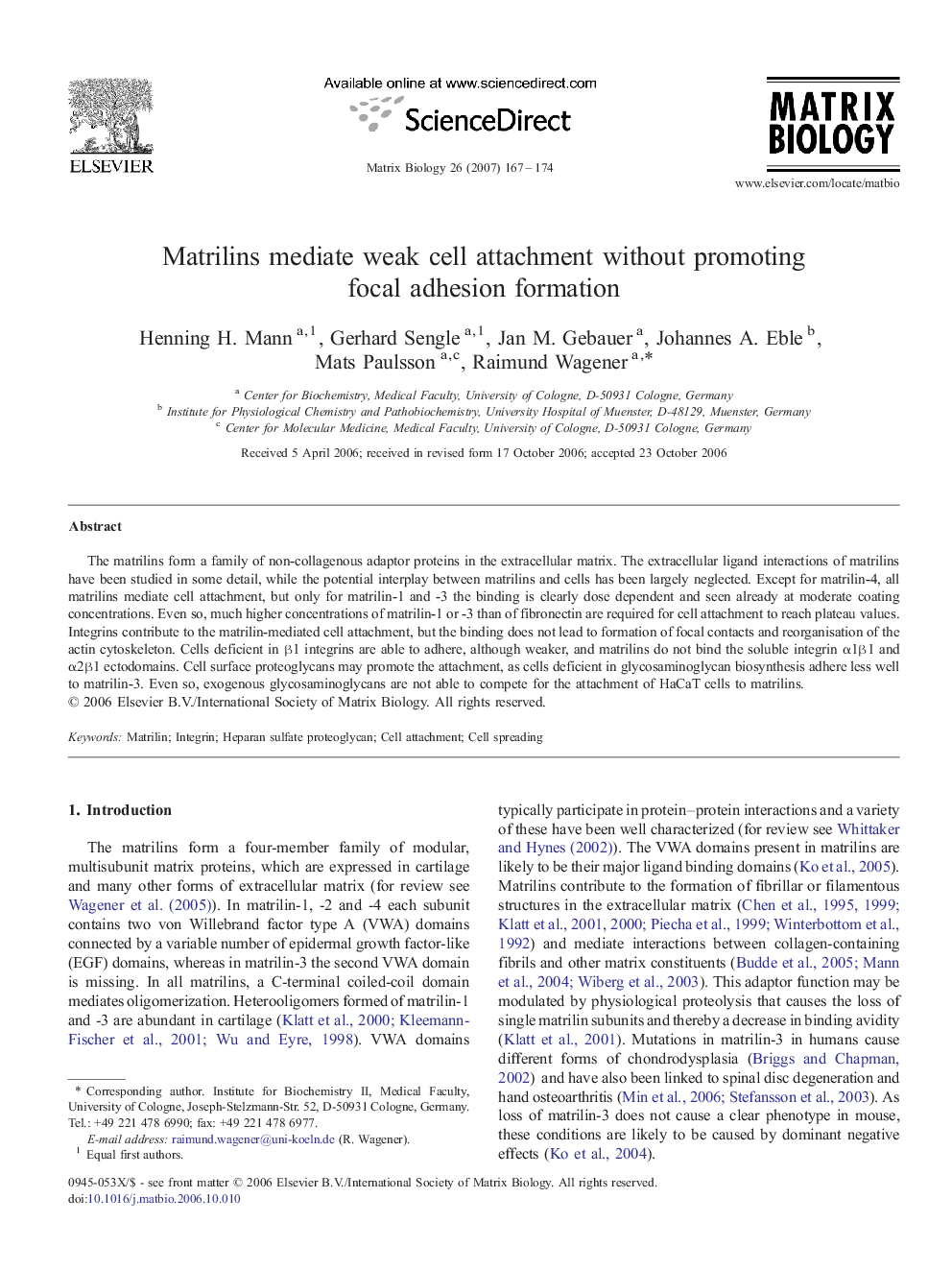| Article ID | Journal | Published Year | Pages | File Type |
|---|---|---|---|---|
| 2145260 | Matrix Biology | 2007 | 8 Pages |
The matrilins form a family of non-collagenous adaptor proteins in the extracellular matrix. The extracellular ligand interactions of matrilins have been studied in some detail, while the potential interplay between matrilins and cells has been largely neglected. Except for matrilin-4, all matrilins mediate cell attachment, but only for matrilin-1 and -3 the binding is clearly dose dependent and seen already at moderate coating concentrations. Even so, much higher concentrations of matrilin-1 or -3 than of fibronectin are required for cell attachment to reach plateau values. Integrins contribute to the matrilin-mediated cell attachment, but the binding does not lead to formation of focal contacts and reorganisation of the actin cytoskeleton. Cells deficient in β1 integrins are able to adhere, although weaker, and matrilins do not bind the soluble integrin α1β1 and α2β1 ectodomains. Cell surface proteoglycans may promote the attachment, as cells deficient in glycosaminoglycan biosynthesis adhere less well to matrilin-3. Even so, exogenous glycosaminoglycans are not able to compete for the attachment of HaCaT cells to matrilins.
